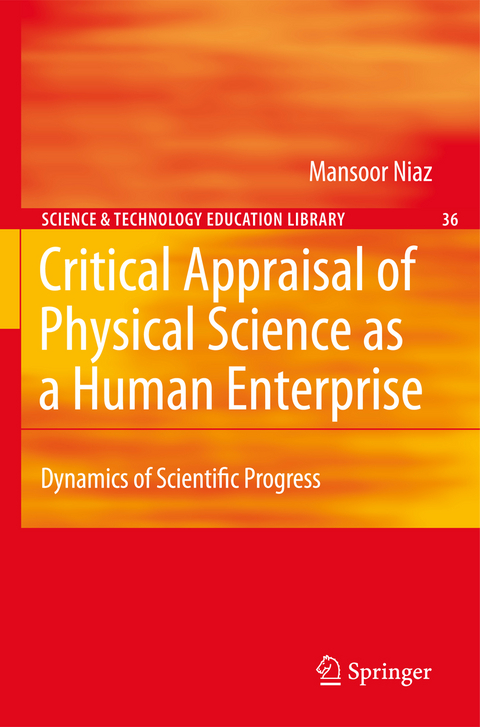
Critical Appraisal of Physical Science as a Human Enterprise
Springer (Verlag)
978-90-481-8172-8 (ISBN)
Quantitative Imperative Versus the Imperative of Presuppositions.- Understanding Scientific Progress: From Duhem to Lakatos.- Kinetic Theory: Maxwell's Presuppositions.- Periodic Table of the Chemical Elements: From Mendeleev to Moseley.- Foundations of Modern Atomic Theory: Thomson, Rutherford, and Bohr.- Determination of the Elementary Electrical Charge: Millikan and Ehrenhaft.- Paradox of the Photoelectric Effect: Einstein and Millikan.- Bending of Light in the 1919 Eclipse Experiments: Einstein and Eddington.- Lewis's Covalent Bond: From Transfer of Electrons to Sharing of Electrons.- Quantum Mechanics: From Bohr to Bohm.- Wave–Particle Duality: De Broglie, Einstein, and Schrödinger.- Searching for Quarks: Perl's Philosophy of Speculative Experiments.- Conclusion: Inductive Method as a Chimera.
| Reihe/Serie | Science & Technology Education Library ; 36 |
|---|---|
| Zusatzinfo | XIV, 216 p. |
| Verlagsort | Dordrecht |
| Sprache | englisch |
| Maße | 155 x 235 mm |
| Themenwelt | Geisteswissenschaften ► Psychologie ► Pädagogische Psychologie |
| Medizin / Pharmazie ► Medizinische Fachgebiete ► Psychiatrie / Psychotherapie | |
| Naturwissenschaften | |
| Sozialwissenschaften ► Pädagogik ► Erwachsenenbildung | |
| Sozialwissenschaften ► Pädagogik ► Schulpädagogik / Grundschule | |
| ISBN-10 | 90-481-8172-0 / 9048181720 |
| ISBN-13 | 978-90-481-8172-8 / 9789048181728 |
| Zustand | Neuware |
| Haben Sie eine Frage zum Produkt? |
aus dem Bereich


